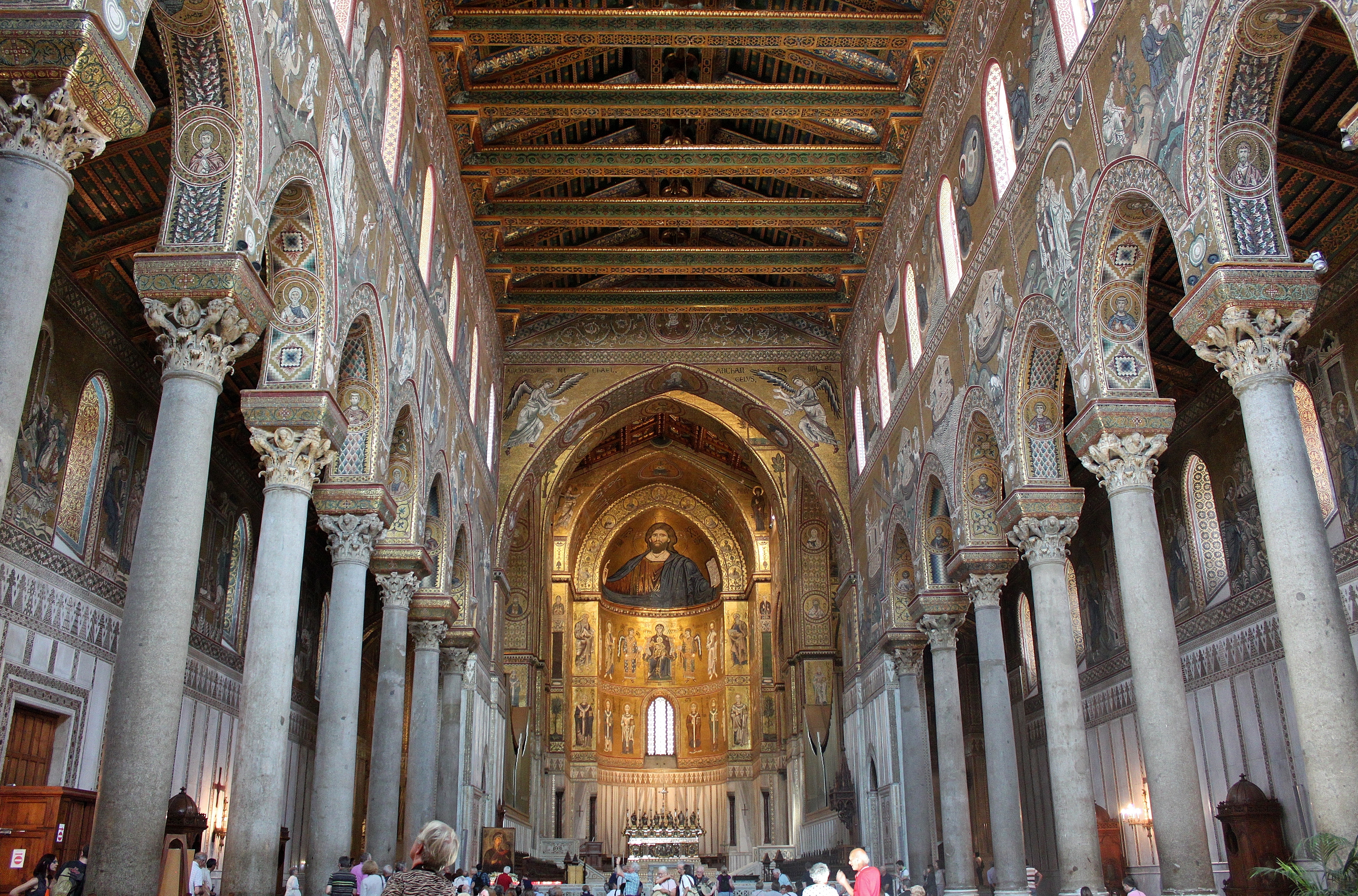Mare Nostrum (Latin for “Our Sea”) was a common Roman name for the Mediterranean Sea. The term was always somewhat ambiguous: it both implied Roman dominance of the Mediterranean and the cultural diversity of the nations that have bordered it for well over two millennia. Since before the Roman times, the Mediterranean Sea always was a meeting ground for cultures that bordered it–sometimes peaceful, sometimes not.
The island of Sicily is not just the geographic center of the Mediterranean, it always was a place where the Orient and the Occident intersected, and it was located at the historically fluid boundary between Europe and Africa. In Antiquity, native peoples like the Elmynians shared the island with Phoenicians, Carthaginians, Greeks, and Romans who all laid claim to all or part of Sicily at some point. Many of these cultures coexisted in Sicily over time, although many battles were fought as well.

Greek temple of the Doric order at Segesta, Sicily, built by the indigenous Elmynians around 420 BCE.
After the demise of the Western Roman Empire, a number of Mediterranean cultures dominated Sicily throughout the Middle Ages. Vandals, Goths and Byzantines ruled Sicily in quick succession, until the Arabs erected the Emirate of Sicily (827-1091). The Normans arrived in Sicily in 1061 and created and gradually expanded their own kingdom that lasted until the Norman dynasty died out in 1198. The Hohenstaufen dynasty from Southern Germany assumed the Sicilian crown, followed by the house of Anjou in 1266. By the early 14th century, Sicily had fallen under influence of the Spanish house of Aragon. The common thread in Sicilian history is that it was always ruled by foreign kings who brought in foreign cultural influences.
Today, the narrow lanes in the old towns of Palermo and Cefalù still show the Arabic layout. But it was the Normans who left a huge architectural imprint on Sicily with their ambitious construction program which was designed to re-establish Christianity on the island. The cathedrals of Cefalù and Monreale, both close to Palermo, and the Norman royal palace in Palermo with its stunning palace chapel demonstrate that Norman Palermo was perhaps the most important European cultural center in the 12th century–and an early hub of globalization.
The Normans left a big imprint on Sicily from the time of their first arrival in 1061 until around 1250. They created a hybrid culture that is commonly referred to as Norman-Arab or Norman-Arab-Byzantine culture. This civilization resulted from the interaction between the Greek-speaking population, Arab settlers who had dominated the island before the arrival of the Normans, and of course the Romanesque Northern European culture imported by the Normans. As a result, Sicily became the crossroads of Mediterranean cultures under Norman rule, and a hybrid culture arose that integrated Norman-Catholic, Byzantine-Orthodox and Arab-Islamic elements. The Monreale Cathedral with its Byzantine mosaics and the adjacent cloister created by Arabic craftsmen is the crowning achievement of this culture.
Today, the concept of Mare Nostrum has taken on a different meaning. Following the tragic 2013 Lampedusa migrant shipwreck in which over 360 African refugees drowned, the Italian government implemented the Operation Mare Nostrum, a military and humanitarian operation designed to simultaneously rescue refugees who cross the Mediterranean Sea from Africa in unsafe, overloaded boats and to apprehend the traffickers. The initiative has since been scaled back for financial reasons.

Memorial to African refugees who drowned in the Mediterranean, made out of boat fragments (Cathedral of Noto). The inscription quotes Pope Francis “Chi piangerà per questi morti?” (Who will cry for these dead?)
In this contemporary usage, the term Mare Nostrum is intended to embrace the diversity of Mediterranean cultures and to enhance exchange and cooperation between them. But the opposite is happening in Sicily today. The unresolved refugee crisis that is focused on Sicily, primarily due to its proximity to the North African coast, highlights how Sicily’s role in a new era of globalization has changed. What once was the center of the Mediterranean world now has become an outpost of the European Union, the border between the wealthy industrialized nations and the Global South. Ironically, the globalization of the 21st century has created an impermeable border, a bulwark both physical and mental, on an island that was the meeting point of Mediterranean cultures and civilizations for over two millennia.









